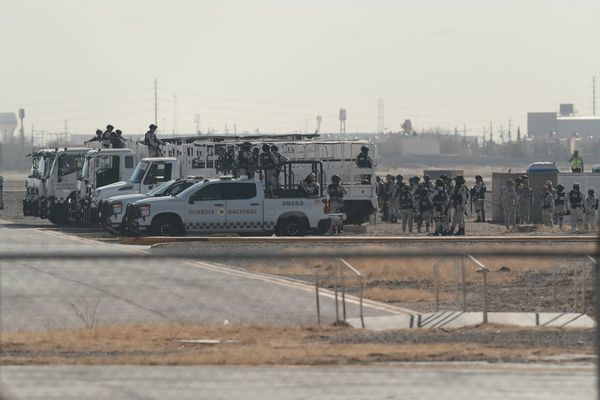Victoria has been rocked by a magnitude-5.9 earthquake, which experts say is one of the biggest quakes to hit south-eastern Australia in hundreds of years.
Wednesday's earthquake was higher on the Richter scale than the magnitude 5.6 quake that hit Newcastle in New South Wales in 1989, which damaged 50,000 buildings and killed 13 people.
At this stage, reports of significant property damage from Victoria's quake have been limited to the upper level of a building on Melbourne's Chapel Street, which resulted in no serious injuries — but in the immediate aftermath, it can be difficult to spot hidden damage.
Luke Gallagher, the executive general manager of direct claims at IAG, one of Australia's biggest insurers, says they've so far received more than a hundred claims for property damage and they expect that number to grow.
As of around the same time on Wednesday afternoon, Allianz had received 70 claims, mostly for minor cracking but also some detailing "extensive damage".
"Most of the damage we're seeing from [Wednesday's] earthquake relates to cracks in the walls, ceilings, and cornices," Mr Gallagher says. "So where people see that damage, we are encouraging them to call their insurer as soon as possible to get that claim lodged."
If your home is hit with a quake, here are some of the things you should look for when it's safe to do so — and what you should do if you spot something that doesn't look right.
What damage can an earthquake do to your home?
Quite a lot in some cases, but Dr Elisa Lumantarna, an expert in earthquake engineering at the University of Melbourne, says the actual impact depends on a number of factors: the strength of the earthquake, the type of building, the soil beneath it and how close it is to the epicentre.
In the case of the Victorian quake, based on the size alone, she says "some damage is possibly expected".
"Generally, if we are looking at residential houses, made of a timber frame, the frame itself is quite robust," she says. But masonry, for example, is more brittle, she says, and should be examined for cracks or misalignment.
It's also important to know that earthquake damage will fall into one of two categories — direct and indirect.
Direct damage refers to what the earthquake itself has caused, such as the collapse of part, or all, of a building, damage to a building's facade, and cracks.
Indirect damage refers to issues caused by something else that was impacted by the quake. This might be a tree being toppled which then alters the foundation of a building, or a burst water pipe weakening the structure.
Associate Professor Amin Heidarpour, head of structural engineering at Monash University, says both types of damage can cause serious issues — even if it doesn't look significant to the naked eye. "Not all cracks are big enough to be easily seen," he says.
How to spot damage?
Following an earthquake, when it is safe to do so taking into account the likelihood of aftershocks, the first step is to undertake a careful inspection of your home, including basements, stairwells, attics, and the exterior.
In this process, you should look for any small cracks or bulges in the structure, leaks in the roof, damage to exposed beams, evidence of foundation movement and even take note of doors and windows that are jammed or not closing properly.
In multi-storey buildings, particular attention should be paid to stairs; if they were stable before the earthquake, are they now wobbly?
"For example, is there any crushing damage at the ends of the wall or at the bottom corners, or is there any damage to fence lines?," Associate Professor Heidarpour asks.
"Because if, for example, there is damage to a fence line it means there is a more serious problem in another part of the building."
While some of the damage you find may seem small, he warns it could be a sign of more serious internal problems within the building's skeleton.
"These signs basically tell us that there might be a serious problem somewhere else in the building," he says. "These are the things that people need to take seriously."
If you find damage, what should you do?
The first step in the case of any emergency should be to determine the building is safe, and if it's not, evacuate and call emergency services.
But if you've noticed only minor changes to the building, experts say it's then time to call your insurer and organise for a structural engineer to assess the house.
In preparation for an insurance claim, Mr Gallagher, from IAG, says it's important for people to take clear photos of any damage and write down their recollections early on to streamline the assessment process.
"We have qualified engineers on standby ready to go out and assess the damage … and determine whether the damage is as a consequence of the earthquake and what the next logical steps are" he says, adding that claims will be triaged based on their severity.
"IAG, like other insurers as well, provides cover for earthquakes, so people can rest assured that there is no issue around claim coverage."
Some damage could be purely aesthetic, such as a crack to drywall, but it could also be a sign of something more dangerous. Engineers can use tools to identify any damage caused by an earthquake and whether it's likely to impact the strength of the building going forward.
This step is very important, Associate Professor Heidarpour says, because it may avoid a more serious issue down the line.
For example, he said, the lateral force of a quake could impact the integrity of the structure in such a way that it is unable to withstand any other force, even heavy winds.
"If partial damage has happened because of this earthquake, it needs to be taken seriously. Why? Because it may affect the behaviour of a structure for the next wind," he says. "Not the next earthquake, wind."







